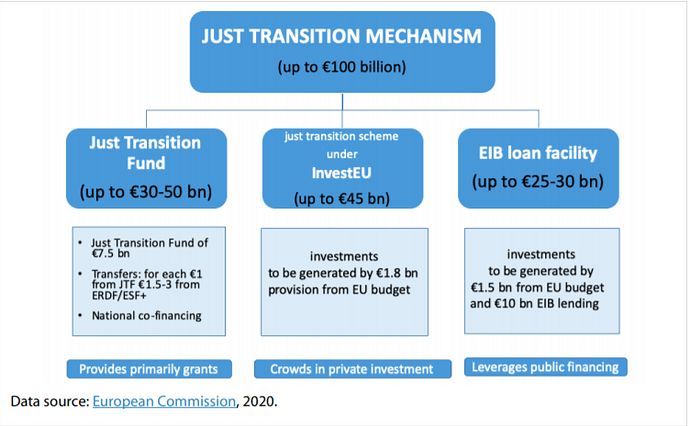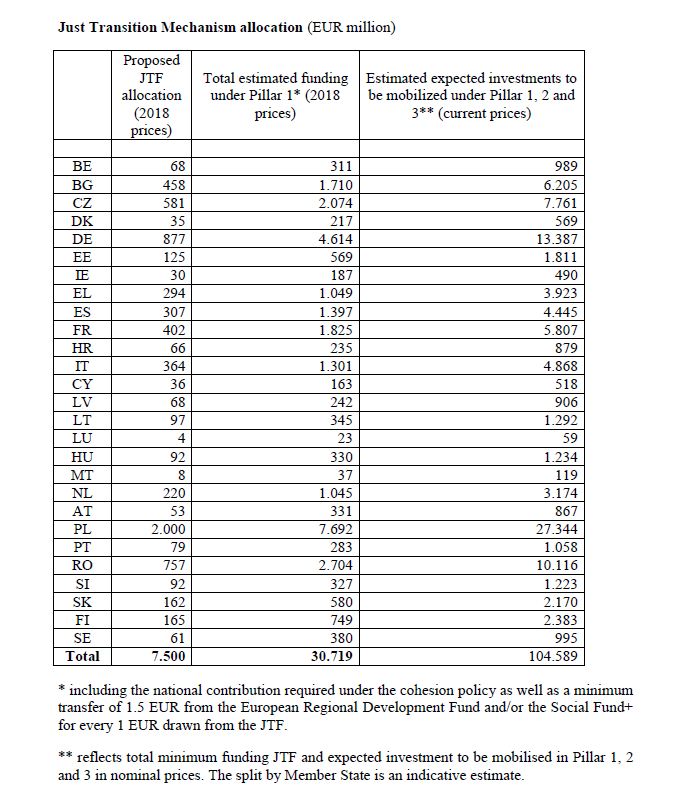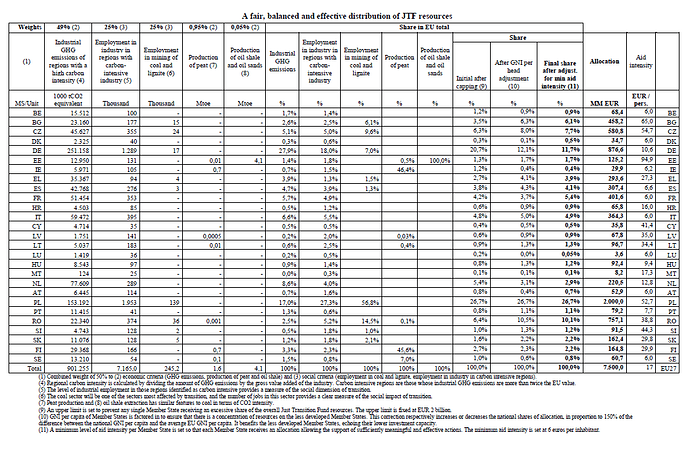OVERVIEW
On 2 May 2018, the European Commission adopted its proposal for the next multi-annual financial framework covering the period 2021-2027. The proposal demonstrated the Commission’s increased ambition concerning climate-related activities and proposed to spend 25% of expenditure on such activities, amounting to EUR 320 billion, to be mobilised through the EU budget. The Commission later adopted, on 29 and 30 May 2018, its legislative proposals governing the use of cohesion policy funding for the same period. One of the main objectives which will drive EU investments in 2021-2027 will be a “Greener, low-carbon Europe, by promoting clean and fair energy transition, green and blue investment, the circular economy, climate adaptation and risk prevention and management” implementing the Paris Agreement. According to the Commission’s proposal, a significant share of cohesion funding will focus on this priority. It will be essential to confirm that share in the ongoing legislative process. On 11 December 2019, the Commission adopted a Communication on the European Green Deal, setting out its roadmap towards a new growth policy for Europe.
INTRODUCTION
This growth policy is based on ambitious climate and environmental objectives and on participatory processes bringing citizens, cities and regions together in the fight against climate change and for environmental protection. In line with the objective of achieving EU climate neutrality by 2050 in an effective and fair manner, the European Green Deal proposed a Just Transition Mechanism, including a Just Transition Fund, to leave no one behind. Funding will be available to all Member States, while focusing on those regions and sectors that are most affected by the transition given their dependence on fossil fuels, including coal, peat and oil shale or greenhouse gas-intensive industrial processes. The fund will support workers, companies, and regional authorities, encouraging investments that facilitate the transition.
GENERAL FRAMEWORK
The proposed budget for the Just Transition Fund (JTF) is €7.5 billion, to be complemented with resources from cohesion policy funds and national co-financing (up to a total of €30-50 billion). The Commission expects the three pillars of the Just Transition Mechanism – the Just Transition Fund (€30-50 billion), the InvestEU scheme (up to €45 billion), and the EIB loan facility (€25-30 billion) – to mobilise at least €100 billion of investments.
The Just Transition Fund will be implemented under the cohesion policy. Its delivery will follow the amended Common Provisions Regulation and be included in partnership agreements and programmes. The JTF’s own specific budget will be complemented with resources from the ERDF, ESF+, or a combination of the two, through obligatory transfers. The total of ERDF and ESF+ resources transferred to the JTF should be between 1.5 and 3 times the amount of the JTF budget. In order to ensure continued impact of cohesion policy, the resources transferred from either the ERDF or ESF+ cannot exceed 20 % of the respective ERDF and ESF+ allocations to any individual Member State (new proposed article 21a of the amended CPR). Member States are also expected to provide funding of their own, with levels of EU co-financing depending on the category of the region in which the ‘just transition territory’ is located. The remaining two pillars of the Just Transition Mechanism – the InvestEU scheme and the EIB loan facility – will have a broader geographical and thematic scope than the JTF, being available to territories outside the ‘just transition’ zone, on condition that projects are beneficial to ‘just transition territories’ – for example, transport or energy infrastructure projects that improve the connectivity of these territories. The two pillars will also cover a broader range of activities, for instance district heating and gas networks, energy efficiency of buildings, energy and transport infrastructure, and social infrastructure. The Just Transition Fund will primarily provide grants. The InvestEU scheme will seek to bring in private investment, whereas the EIB loan facility will leverage public funding.
SCOPE OF SUPPORT
The Just Transition Fund will only finance activities that are directly related to its specific objective and that contribute to the implementation of the territorial just transition plans. It will support workers, companies, and regional authorities, encouraging investments that facilitate the transition. The activities supported are restricted to a) productive investments in SMEs (including start-ups) that lead to economic diversification and reconversion, b) investments in the creation of new firms, including support for business incubators and consulting services, c) investments in research and innovation activities that foster the transfer of advanced technologies, d) investments in the deployment of technology and infrastructure for affordable clean energy, as well as in greenhouse gas emissions reduction, energy efficiency, and renewable energy, e) investments in digitalisation and digital connectivity, f) investments in regeneration and decontamination of sites, land restoration, and repurposing projects, g) investments that enhance the circular economy, including those that promote waste prevention, reduction, resource efficiency, reuse, repair and recycling, h) upskilling and reskilling of workers, i) job-search assistance to jobseekers, j) active inclusion of jobseekers, and k) technical assistance. The fund may also support investments in enterprises other than SMEs, and investments aimed at reducing greenhouse gas emissions resulting from activities listed in Annex I to Directive 2003/87/EC (EU emissions trading system – ETS), as long as they have been approved in the territorial just transition plans and are necessary for the implementation of those plans.
TERRITORIAL JUST TRANSITION PLANS
The support from the Just Transition Fund will be based on the territorial just transition plans and programmed under one or more priorities, either in programmes supported also from the ERDF, the ESF+ or the Cohesion Fund or in a dedicated Just Transition Fund programme. Territorial just transition plans will be prepared by the Member States, together with the authorities of the territories concerned and the relevant partners specified in article 6 of the new CPR. The selection of territories should be made on the basis of the economic and social impacts of the transition, especially with regard to employment in the fossil fuel sector and the transformation needs of industries with the highest greenhouse gas intensity. One or more territorial just transition plans can cover one or more affected territories – NUTS 3 level regions or parts thereof. The territorial just transition plans must describe the transition process at national level and aim towards a climate-neutral economy, including a timeline of key steps consistent with the National Energy and Climate Plans. The territorial just transition plans will be part of the programmes and will be adopted by the same Commission decision as the programme.
ALLOCATION METHOD
The Just Transition Fund will provide support to all EU Member States, while concentrating on those territories and regions where the magnitude of the climate transition is larger. The allocation method is based on objective and clear criteria.
As the JTF should contribute to mitigate the socio-economic impact in the regions and sectors most affected by the transition due to their reliance on fossil fuels or energy intensive industries, the criteria reflect the relevant economic and social indicators of the Member States and regions concerned:
- Greenhouse gas emissions of industrial facilities in regions where the carbon intensity of those emissions exceeds the EU average.
- The level of employment in the mining of coal and lignite.
- The level of employment in industry in the regions referred to under point 1.
- The production of peat.
- Production of oil shale.
The economic criteria (GHG emissions, production of peat, production of oil shale) and the social ones (employment in coal and carbon intensive regions) weigh 50% each in the calculations.
In order to ensure an appropriate concentration of resources on the least developed Member States, GNI per capita is also factored in. The national shares of the allocation are increased or decreased to reflect the difference between the national GNI per capita and the average EU GNI per capita.
Secondly, an upper limit is introduced to prevent any single Member State receiving an excessive share of the JTF resources and ensure a fairer and balanced distribution between Member States. The upper limit fixed at €2 billion.
Thirdly, a minimum level of aid intensity is set so that each Member State receives an allocation allowing the support of meaningful actions. The minimum aid intensity is set at €6 per inhabitant.
This allocation method helps ensure that the distribution of funds is sufficiently concentrated on Member States where the challenges are most important, while offering a meaningful support to all Member States. Notably, the Member States with a GNI/head lower than 90% of the EU average would receive about two thirds of the JTF funding.
For more information:
EUR-Lex - 52020PC0022 - EN - EUR-Lex,
https://www.europarl.europa.eu/RegData/etudes/BRIE/2020/646180/EPRS_BRI(2020)646180_EN.pdf,


